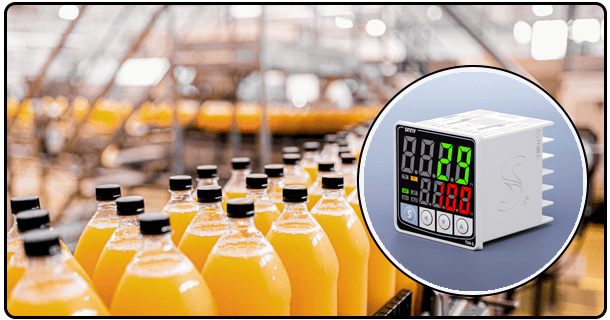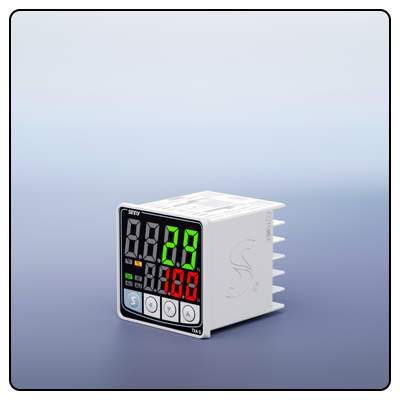How to Upgrade Your Temperature Control System
Discover how to upgrade your temperature control system for increased efficiency and performance, including step by step guides, advanced techniques, and best practices that ensure its success.
1. Introduction
Temperature control systems play a key role across industries, providing precise temperature regulation to optimize performance and efficiency. Upgrading your system may offer significant gains in accuracy, energy savings and operational efficiencies that improve its overall operational effectiveness.
Analyzing Your Current System
To upgrade your temperature control system, the initial step involves an analysis of its existing structure in order to identify areas for improvement. Carefully assess its performance, reliability, and any restrictions or constraints which might impede its efficiency.
Performance Metrics: Examining key performance indicators (KPIs), such as accuracy, response time and energy consumption can help identify your specific upgrade needs and goals. Understanding KPIs may assist in this regard.
2. Evaluating Upgrade Needs
New Technology Advancements: Stay aware of new temperature control developments as these can provide improved accuracy, more energy-efficiency and enhanced features that could significantly benefit your operations.
Compatibility: Make sure that the new temperature control system fits in seamlessly with existing equipment and processes to achieve seamless integration and optimal performance. Compatibility is of utmost importance in providing seamless integration and optimal results.
Scalability: Take into consideration how an upgraded system might grow with you over time and select one which can accommodate expansion plans as your operations expand and change.

3. Selecting the Proper Temperature Controller
There are various kinds of temperature controllers, from On/Off controllers and Proportional controllers, through PID controllers and more specialized PID temperature regulators that each provide distinct advantages when used for different applications. Understanding these options will enable you to find one suitable to meet your requirements.
Advanced Features: When considering advanced features for your temperature control system, such as adaptive control, remote monitoring and data logging; consider what they could add in terms of improving its performance and efficiency.
Vendor Selection: It is crucial that you find a reputable vendor with experience providing temperature control solutions, who can offer valuable support during the upgrade process. An established provider will be an invaluable ally during any major overhaul or change process.
4. Planning Your Upgrade
To Ensure A Smooth Upgrade Process.
A detailed project plan with timelines, budgets and resources mapped out is key to ensure an effortless upgrade process.
Engaging Key Stakeholders in Planning: Involve key stakeholders early on in order to gain their support. Doing this may also assist with any concerns and ensure the upgrade meets everyone's requirements.
Risk Management: Recognizing risks and devising mitigation plans. Adequate risk management practices are necessary when upgrading a system.
5. Implementation Process
Installation: Adhere to proper procedures when setting up the new temperature control system. It is imperative that all connections remain safe and are correctly configured in order to avoid any potential issues with setup and functioning.
Configuration: Optimize controller parameters to achieve optimal performance by configuring desired temperature range, control mode and other settings that may be important.
Calibration: Calibrate your system for accurate temperature readings to achieve precise readings. Calibration involves comparing system readings against known standards and making any necessary adjustments that align them.
6. Testing and Validation
System Testing: Perform rigorous system tests in order to test out an upgraded system in its entirety and identify any potential issues as well as ensure it operates as planned. Testing should include both basic functionality testing, as well as more in-depth assessments aimed at discovering any hidden gems within it.
Validation Protocols: Establish validation protocols in order to comply with industry standards and protect the integrity and reliability of the temperature control system. Validation plays an essential part in upholding integrity and reliability in temperature controls systems.
User Training: Provide appropriate user and maintenance personnel training on the new system so they are capable of operating and maintaining it effectively. Ultimately, successful user adoption means increased system upkeep costs over time.
7. Monitoring and Maintenance
To optimize system performance, implement continuous monitoring. Doing this allows for early identification of any deviations as well as prompt adjustments needed for maximum functionality.
Regular Maintenance: Establish a maintenance schedule in order to guarantee long-term reliability of the temperature control system, including cleaning sensors, checking connections and recalibrating as necessary. Regularly maintain sensors by cleaning them out while checking connections are in good working order as well as recalibrating as required by calibrating and recalibration services as part of this service.
Upgrades and Software Updates: Plan for future upgrades and software updates so your temperature control system continues performing optimally. Keeping abreast of new innovations ensures optimal operation from your temperature controller system.

8. Conclusion
Upgrading your temperature control system can bring significant improvements in accuracy, energy savings and overall operational efficiency. By carefully considering your existing system and identifying upgrade needs before adhering to best practices for planning, implementation and maintenance - along with consulting experts for advice - an upgrade should go smoothly and lead to long-term success for the long run.
- Integrating Temperature Controllers Into Your System
- How to Select Temperature Sensors for Your Temperature Controller





















